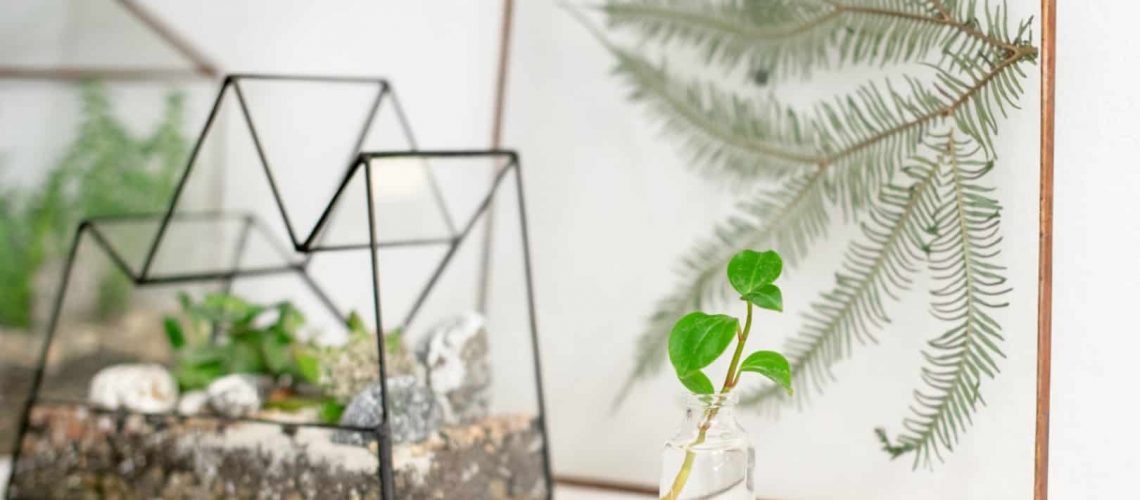Whether you’re looking to extend the life of your newly planted seedlings or protect your plants and sprouts from attacks of cats and insects or simply prevent the kids from plucking the pretty flowers that have just sprung up, covering your plants up in a garden cloche would be a perfect solution.
If you think it could be daunting to set up a garden cloche, you are mistaken. It is a fairly easy task, and the best part – it doesn’t require much investment.
In this article, you’ll find all the elements you need to know to set up a seamless garden cloche.
To set up a cloche in your garden, all you need are a few basic building materials, including flexible long plastic pipes, a pack of tool clips, a few Nuts and Bolts, Downpipe clips, screws, and Insect garden netting. Fix them all together into a strong framework, and there, your cloche is ready!
Steps to set up a Garden Cloche
Follow these simple steps, and your cloche would be ready in no time!
- A garden cloche is usually hollow from the bottom, resting directly on the surface of the soil. Sow the seeds first, and then place your cloche over it.
- To begin with, place sheets of raised garden onto the soil to cover the area where you want to set up the cloche. Then drill holes on the edges and in the center of the wooden base sheets and attach the tool clips. Fix the tool clips with the screws.
- Now take a plastic pipe (you’ll need 4 of these) and insert it into the tool clip. Push it deeper into the garden bed so that the soil grips the pipe well. Bend the pipe and insert the other end in the tool clip on the adjacent side so that the pipe forms a hoop.
- Repeat this procedure with the other two flexible pipes as well to form a framed structure. Ensure that the height of the hoops is the same to give a symmetrical look.
- Now take the last pipe and trim it according to the length of the cloche. Place it horizontally on the top of the hoops and Use it to Connect the three hooped pipes together from the highest point to create a balanced structure.
- To keep it intact, you need to drill pilot holes on the points where the pipes meet and lock them together using a bolt and secure it with a nut. Now that the horizontal support is screwed with all three hoops, your structure is almost ready.
- Lastly, drape the insect garden netting onto the prepared frame. Make sure there is ample netting left on the bottom to tightly tuck it into the sides. Start wrapping the netting over the frame from one end, taking it smoothly to the other. As you snug the edges of the netting, fasten it with the clips on the pipes to wedge it well. Make sure it is not loose or flabby so that your cloche stays firm.

Are Garden Cloches a popular garden feature?
Do you know that garden cloches are being used extensively for decades to shield the plantations? This French term means ‘Bells’ as initially the cloches were designed using bell-shaped glass jars.
However, we now have more contemporary ways of setting up a garden cloche. The new garden cloches are more durable, provide better ventilation and add to the aesthetics of your garden.
Why do you need to set a garden cloche?
Setting up a garden cloche would serve a variety of beneficial purposes for your plantations.
Extends the Plantation period
What if you want to keep your garden green with fresh fruits, vegetables, and bright flowers all year round?
You do not want the plantations in your garden to wilt away within just a few months due to the unfavorable weather conditions. Some of us live in places where the temperatures drop too low, or the rate of precipitation is too high that the crops end up drowning in the soil. Setting up a garden cloche is the perfect solution to evade the extreme climate.
Protects the Plants
If you have an open garden space, it may be a pathway for cats, or if you own pets like rabbits or hens, they may constantly want to munch on your crops. This means that even before your new plants mature, they are nibbled by these animals or even the tiny insects that dwell in the garden. You don’t have to fret about it as you can simply place a shelter over the plants.
Favorable conditions
Your crops might need an extra layer of the shield above them to ripen well. Set up the cloche above the plantations to provide them the extra warmth or covering that they need. The layering above the crops enables them to retain heat and humidity if the weather is too cold, as well as retain moisture by minimizing evaporation if it’s too hot.
Easy to build
It is no science to set up your garden cloche. You don’t have to possess the technical expertise to create the structure. You only need the construction materials, which are easily affordable, to put the cloche together by following our step-by-step guidelines.
Durable and Portable
All you need to ensure is to use high-quality materials so that your cloche lasts you a few years.
The structure is not too heavy to lift, so you can easily move it to other plant beds when needed. Simply pick it up using the central pipe or the sides. As one crop is fully grown, ready to be harvested, move the cloche to the next bedding to provide favorable conditions.
What Materials to use to build a Garden Cloche?
In order to execute a steady garden cloche, there are multiple options available to create a strong structure. Of course, you wouldn’t want your cloche to stumble upon your crops as a result of heavy winds or rain!
Here are a few suggestions that you can use:
Hoop supports
You can replace the plastic rods with metal tubes, heavy gauge wire, rebar, or PVC. You can use any material you get your hands onto conveniently, as long as it serves the purpose. Keep in mind that it should be sturdy and resilient to withstand extreme weather conditions.
Shield covering
To shield the plantations, you can choose from a variety of materials. Depending on what you are trying to protect your plantations from, extremely cold temperatures, insects, or rainwater penetrating in, choose your material accordingly.
You can use woven or fine net mesh to keep the insects away. In winters, for frost-prone plants or in times of extreme heat, fabric or shade cloth can prevent the crops from the harsh weather. If you want to keep the birds away, wire cloches are a good option. Plastic cloches and greenhouse films are effective in protecting the plantations that can be damaged due to excessive water and light.
Cloche Base
Use a durable type of wood that stays intact in the soil. A commonly used type of wood is Cedar, known for its high resistance for the base panels.
Do garden cloches look appealing?
Apart from serving their purpose, garden cloches can add an aesthetically pleasing look to your garden!
Known as a thing of the past, setting up cloches in your tiny garden area can add charm, beauty, and functionality to your garden.

